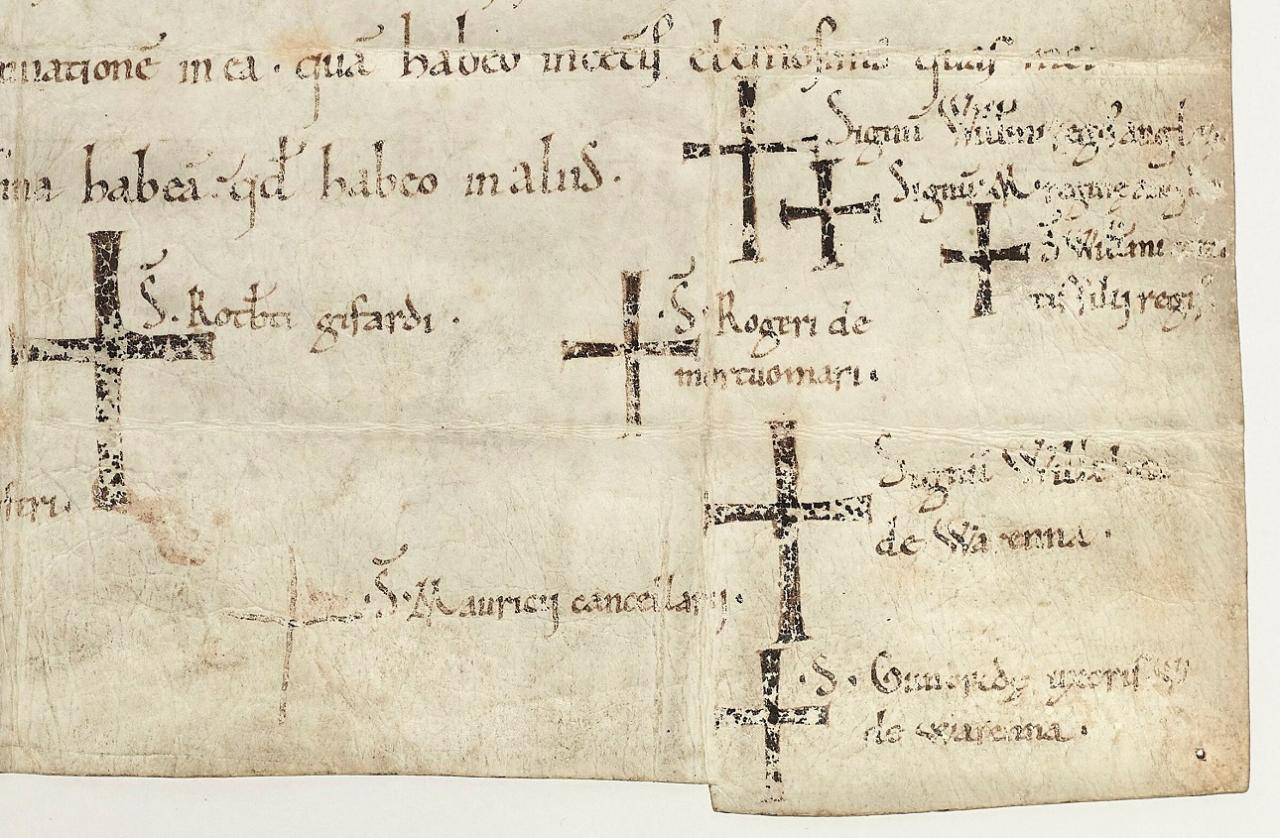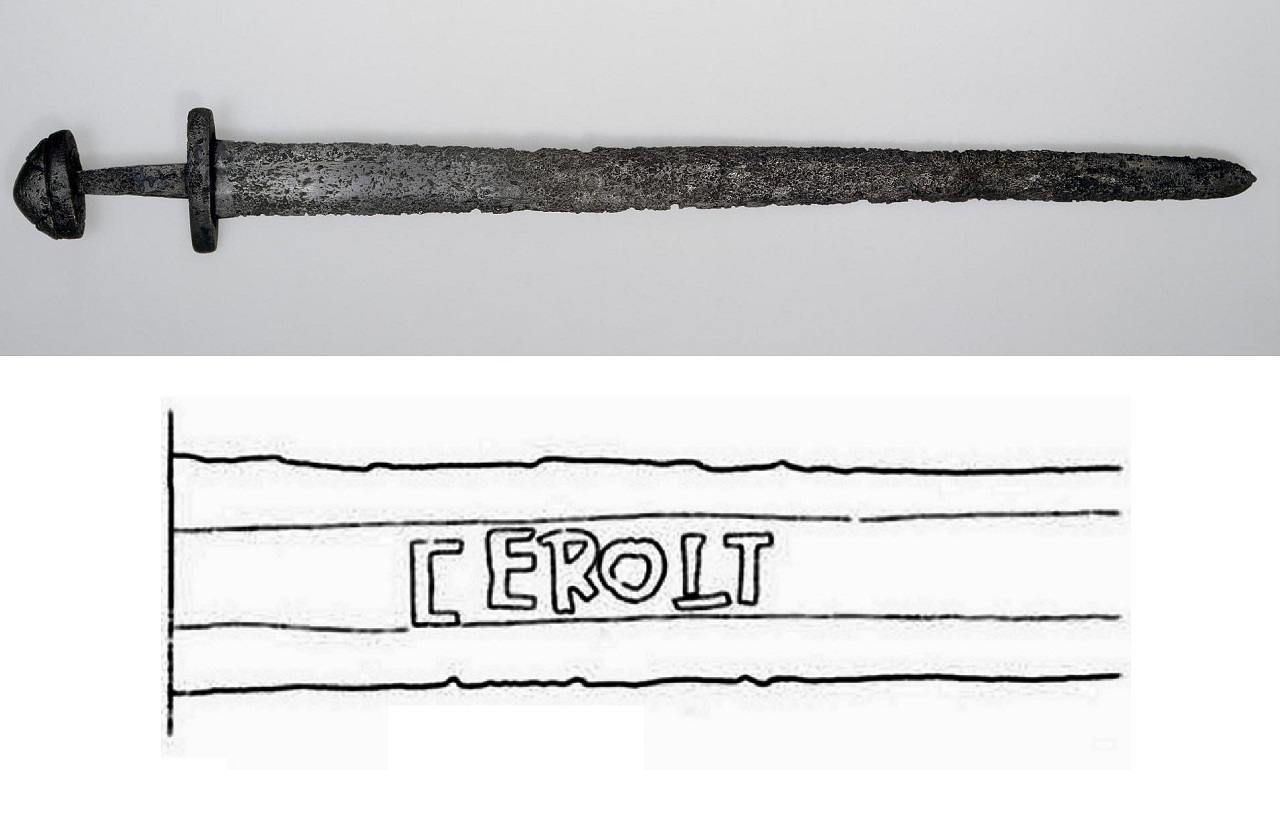Hi Jim!
Quote:
Originally Posted by Jim McDougall

The bishops and abbots of the abbeys were of course the quartermasters for weapons, and just as they typically affixed the CROSS to their names on signed documents, this convention applied to markings on sword blades.
Rather than religious connotation, it was more of a symbol of ecclesiastical or monastic authority.
|
The suggestion that the crosses on Ulfberht swords refer to ecclesiastical rank I think originally comes from Anne Stalsberg. Her work on the Ulfberht group is excellent, but I think this little detail is not well founded. It is quite typical on medieval documents for
everyone to sign their name with a cross. Of course, early medieval documents were written by scribes and the concept of a "personal signature" is a modern one. Many people, even of high rank, might be illiterate or semi-literate – able to read but not write. On some documents you can guess from the penmanship that parties drew the sign of the cross themselves – they "made their mark" – and then scribes filled in the text of their name. In other cases, scribes might simply list all the names of witnesses, for example, each preceded with a cross. I attach an example showing at upper right the "signature" of William the Conqueror and his wife and son, as well as the earl of Warenne and other secular notables.

To confirm that "Ulfberht" is indeed a personal name, Stalsberg searched the confraternity books of several Swabian monasteries, which provide a database of many thousands of names. The closest spelling appearing there is "Uuolfberht" (Wolfberht). Spelling in this time was highly variable and inconsistent. Perhaps the precise spelling "Ulf-" was customary in some other region. The confraternity books can be used to compare other names found on early medieval swords. For example, CEROLT which appears on a single example from Russia. This is a documented spelling of a Germanic name which is modernized as "Gerold" (Cerolt/Kerolt/Kerold/etc). On this sword, the name appears unadorned, without any crosses, and like Ulfberht without the phrase
me fecit. Nevertheless, it seems most natural to interpret these blade-names as referring to a maker or master responsible for producing the sword.

I think comparing sword inscriptions with epigraphs on other objects is likely the most fruitful approach. I have found Elisabeth Okasha's work on Anglo-Saxon inscriptions useful. Some similar trends can be observed here. Many inscriptions begin with a single cross, particularly but not universally, makers' inscriptions with
me fecit. Some swords do follow this template. The identity of the "maker" is always somewhat ambiguous, but scholarly consensus is that it most often refers to the artisan himself. There are cases where it conclusively refers to the commisioner, e.g. an abbot who "made" a new facade for his church. Some artisans, like bellfounders, were typically monks themselves, but maker's inscriptions appear on a wide variety of artifacts whose production was not inherently linked to church authority.

It is interesting that beginning early with VLFBERHT, sword inscriptions mostly follow a standard of two crosses, at beginning and end, which is relatively rare on other kinds of objects (but not unknown, as shown by ring above). I think symmetry may have had a strong appeal in this setting, as evidenced by the number of palindromes that later appear on sword blades, the best-known being SOS and OSO. The standard geometric design on the reverse of VLFBERHT blades is also a symmetric one, as are many other early inscriptions composed of bars, circles, crosses, and other signs. Symmetry can be recognized by all, literate or otherwise, and could enhance the visual impression of the inscription, which might translate to greater mystical or magical power.